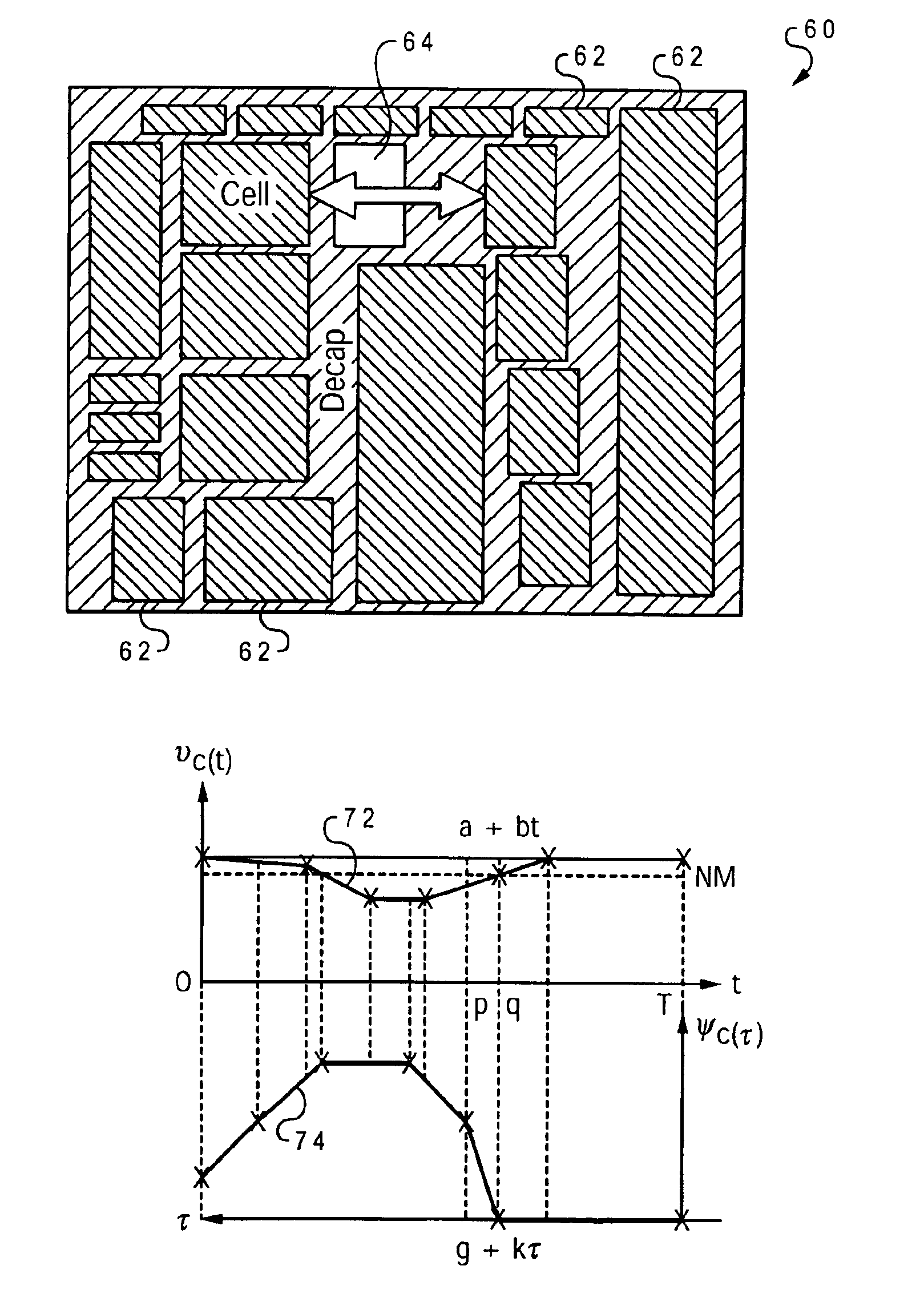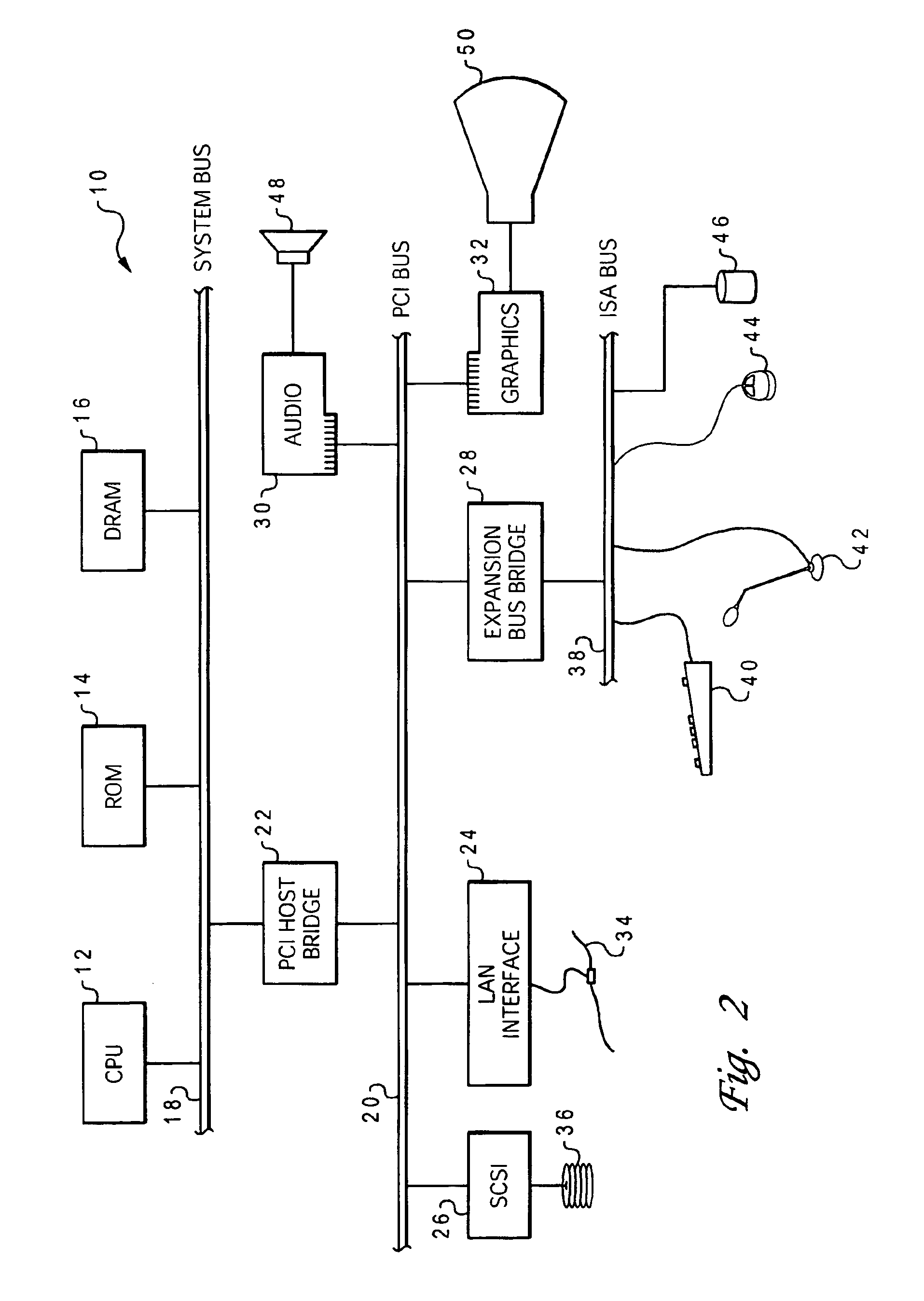Decoupling capacitor sizing and placement
a capacitor and decoupling technology, applied in the field of deco, can solve the problems of large number of cells, difficult connection between cells, and inability to physically design without the aid of computers
- Summary
- Abstract
- Description
- Claims
- Application Information
AI Technical Summary
Benefits of technology
Problems solved by technology
Method used
Image
Examples
Embodiment Construction
)
[0026]The present invention is directed to a method and system for automated placement and sizing of decoupling capacitors (decaps) in ASIC-like circuits. In the preferred implementation, an adjoint sensitivity method is applied to calculate the first-order sensitivity of the power grid noise with respect to every decap. As explained further below, a fast convolution technique based on piecewise linear compressions of the original and adjoint waveforms is used to optimize placement. Experimental results show that power grid noise can be significantly reduced after a judicious optimization of decap placement, with little change of the total chip area.
[0027]With reference now to the figures, and in particular with reference to FIG. 2, there is depicted one embodiment 10 of a computer system programmed to carry out computer-aided design of an integrated circuit in accordance with one implementation of the present invention. System 10 includes a central processing unit (CPU) 12 which c...
PUM
 Login to View More
Login to View More Abstract
Description
Claims
Application Information
 Login to View More
Login to View More - R&D
- Intellectual Property
- Life Sciences
- Materials
- Tech Scout
- Unparalleled Data Quality
- Higher Quality Content
- 60% Fewer Hallucinations
Browse by: Latest US Patents, China's latest patents, Technical Efficacy Thesaurus, Application Domain, Technology Topic, Popular Technical Reports.
© 2025 PatSnap. All rights reserved.Legal|Privacy policy|Modern Slavery Act Transparency Statement|Sitemap|About US| Contact US: help@patsnap.com



